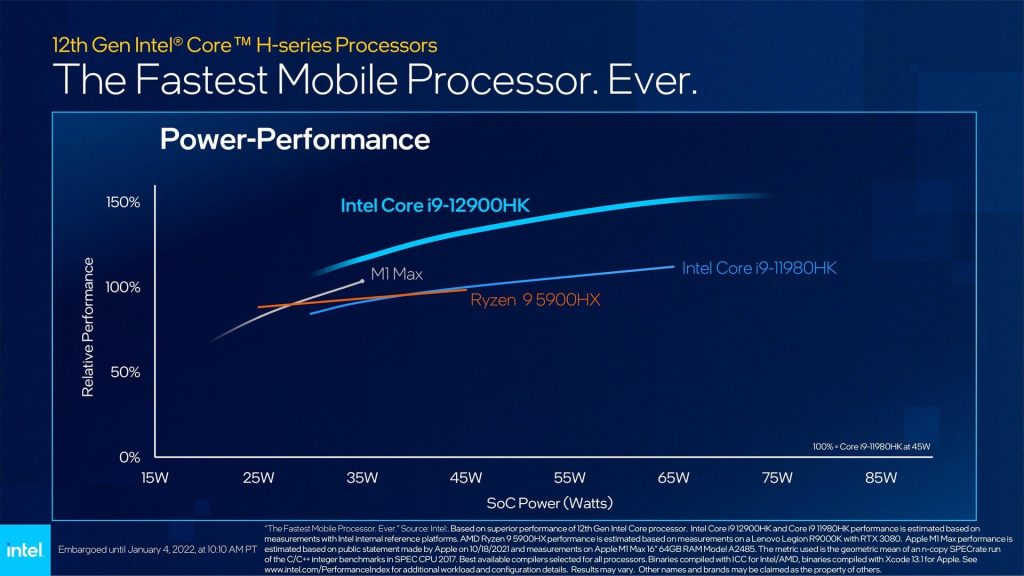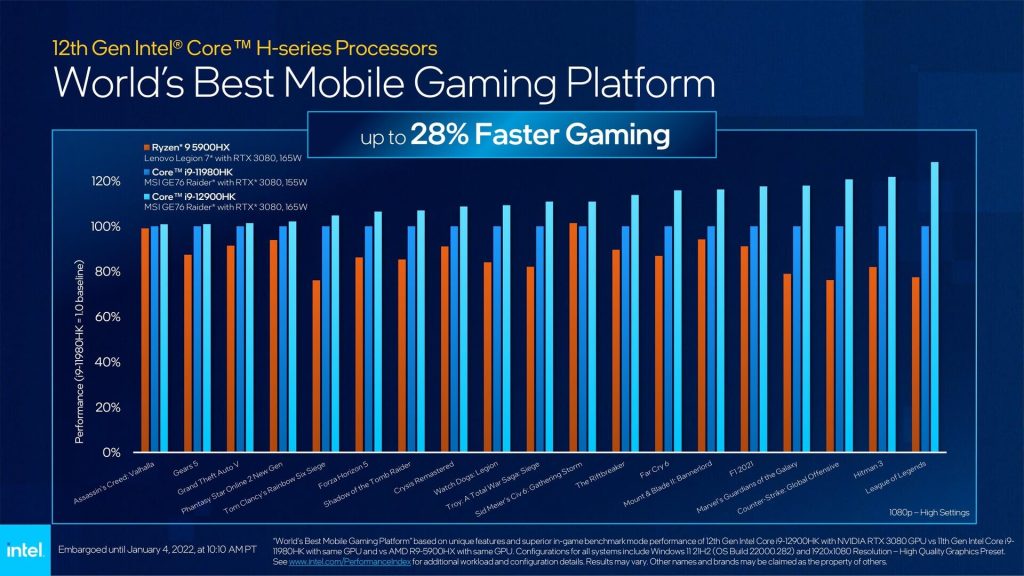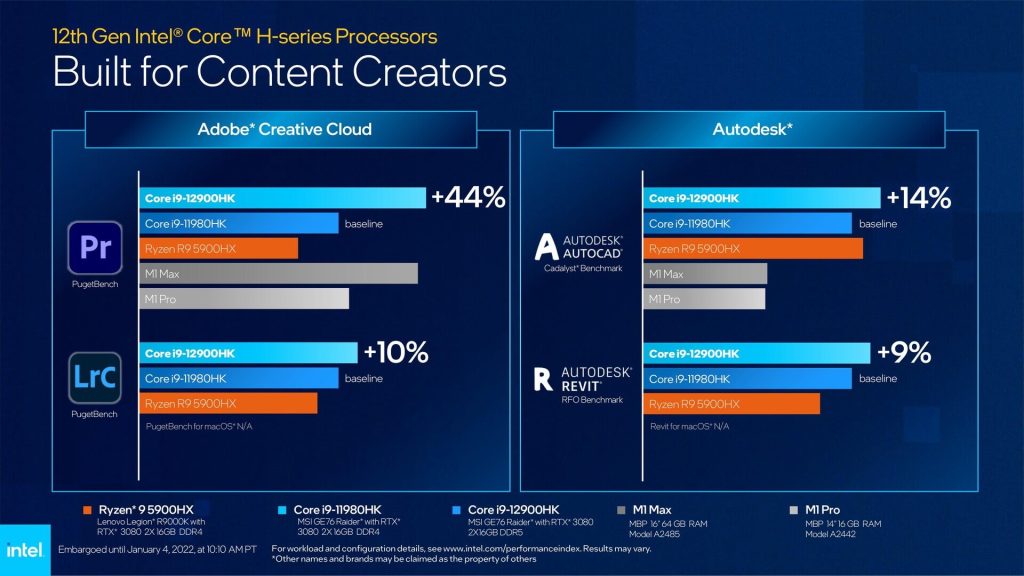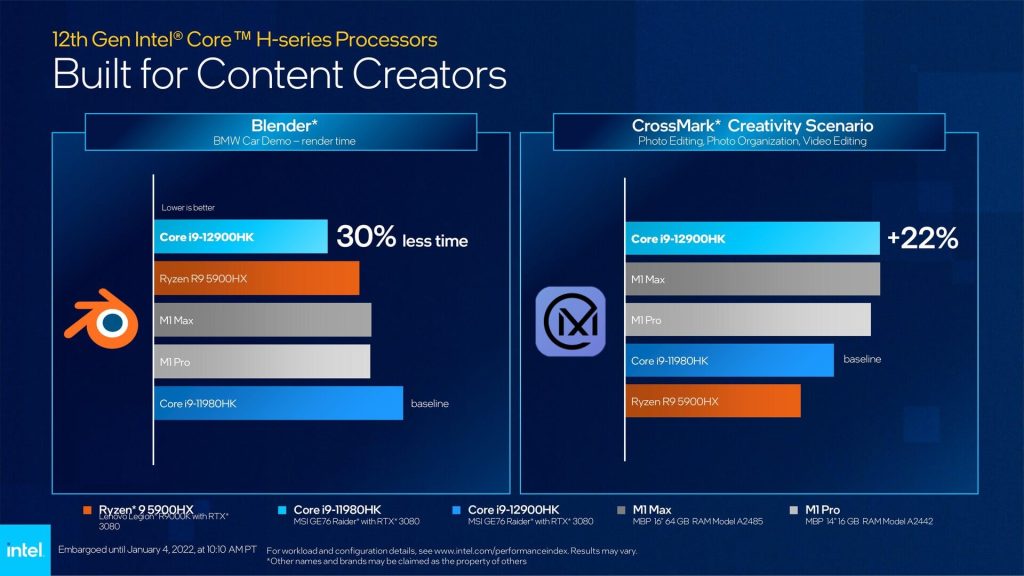On 4th November 2021, Intel released their 12th generation of desktop processors codenamed “Alder Lake”, featuring hybrid computing technology. The launch of 12th gen processors was announced during Intel’s “ON event” taking place on October 27-28, 2021. In this article, I will talk about Intel’s 12th gen processors and its possibility of ushering in a new age of computing.
What is hybrid computing and why does it matter?
The most basic explanation for hybrid computing means combining two types of CPU cores in one single package. One is the more power-hungry with more performance output type (Performance cores) and the other is the less power hungry but delivering decent performance output type (Efficiency cores). It’s the same technology used by ARM based mobile chipsets and more recently, by Apple’s M1 chipset which was hugely successful with the tech enthusiasts.
Intel is no newcomer when it comes to hybrid technology though, they’re the first ones to try this technology to be exact. They already experimented with this technology back in 2020 with a couple of products codenamed “Lakefield”. Although the product failed to sweep the consumers off their feet with its launch, it paved the way towards the future, that is today.
How does this hybrid technology work?
Like I’ve mentioned before, hybrid chips are a combination of performance cores and efficiency cores. When a device is running idly or performing less demanding tasks: like surfing the web or watching a movie or just writing/editing a document, these efficiency cores should be more than enough to get these tasks done, causing the device to use less power without causing any form of performance penalties.
When the device is facing a more demanding task like gaming or 3D animation or video rendering perhaps, those performance cores kick in delivering enough power to meet the demands. It’ll use more power at performance mode, sure. But it’s a much better idea to deliver more power to the CPU when needed than delivering more power to the CPU all the time, in theory at least.
Is the hybrid technology really power efficient?
If we compare the highest end of the 12th gen processor (Intel i9 12900k) and the highest end of the 11th gen processor (Intel i9 11900k) we see at least a performance boost of about 11% while having a similar power draw. So technically it does deliver more performance per watt.
What makes the hybrid technology better than the conventional technology?
To be fair, if it wasn’t done right, it wouldn’t be better than anything. Intel pulled the plug on “Lakefield” processors after releasing 2 products because they weren’t really making any headlines, well not good ones anyway. The technology seemed promising but failed to impress tech enthusiasts probably because the processors were packaged in a 1+4 combination. With 1 performance core and 4 efficiency core, there wasn’t much of a performance to speak of. And when you’re dishing out around $1000, you’re not making a purchase for its efficiency.
What makes “Alder lake” processors a winner though, is the performance core count. Each of these performance cores are hyperthreaded, which means all of the performance cores have 2 threads each. In case of the highest end processor, the i9 12900k, the core count goes to 16 (8 performance plus 8 efficiency) and the total number of threads goes up to 24. That’s a lot of multitasking potential right there.
How good are the 12th gen processors for laptops
Desktops aside, what really benefits from Intel’s 12th gen processors are the laptops. Intel has claimed that “Alder Lake” laptop processors are “The fastest mobile processor. Ever.” Up until now, they’re not exactly wrong there.

Intel’s most powerful laptop processor boasting 14 cores (6 performance and 8 efficiency) and 20 threads start at just 45W. The i9-12900HK can hit 5.00 GHz outclassing AMD’s Ryzen 5900 HX and Apple’s M1 Max as the top gaming laptop processor, whether it’s for gaming or for productivity tasks.



Intel provided the numbers shown above. But if the numbers are nearly accurate to the real world numbers it truly is a game-changer. Apple did show the world the true potential of hybrid computing technology with their M1 mobile chips. If Intel manages to bring some competition to the table, I don’t think as consumers, we’d be complaining.
If you are looking for a more detailed comparison between Intel’s Core i9 and Apple M1, you can check out the article on News Directory.
MSI GE76 Raider, The first laptop with Alder Lake-H
On 25th January 2022, the first laptops sporting Alder Lake-H CPUs were available in the market. Among which the biggest contender was the MSI’s offering, the GE76 Raider, powered by the Intel core i9-12900HK CPU, Nvidia 3080Ti laptop GPU, and 32 Gigabytes of DDR5-4800 memory. Reviewers did see a reflection of Intel’s claims in the review scores. The laptop did indeed perform well, beating both Apple and AMD’s offerings in the tests. The only place where the 12900HK stumbled was power efficiency. Turns out those performance cores really need all the power they can get their hands on. And intel has a lot of work to do if they wanna claim the all-out victory.
So, are the hybrid processors the future of computing?
If someone asked me this question couple of years ago, I’d probably say it’s not. But given the circumstances, I wouldn’t exactly be wrong there. We are becoming more and more dependent on our computers every day. Our computers tackle more and more demanding tasks with every passing day as well. We can’t just give up performance in favor of efficiency and expect to go anywhere while making this much compromise.
The development of Apple’s M1 chip and now Intel’s Alder Lake CPUs is truly amazing. I believe the future of computing might indeed rely on this hybrid technology more than we might’ve predicted before. If you liked this post, you might also want to read about the evolution of foldable smartphones.